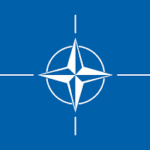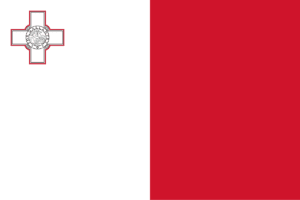malta
Buying Property in Malta: A Guide for Foreign Investors
Population: 516,100 (2024 estimate)
Geography:
- Archipelago in the Mediterranean Sea
- Three main islands: Malta, Gozo, and Comino
- Total area: 316 km²
Economy:
- GDP (nominal): $31.26 billion (2024)
- GDP per capita: $31,777 (2024)
Business Environment:
- EU member since 2004
- Euro as currency
- Low corporate tax rate (5-35%)
- Strong financial services sector
- Emerging tech and gaming hub
International Relations:
- EU and Commonwealth member
- Neutral country with no NATO membership
- Strategic location between Europe and North Africa
Key Economic Indicators:
- Unemployment rate: 3.1% (2024)
- Inflation rate: 2.8% (2024)
- Foreign direct investment: €820 million (2021)
Notable Features:
- English as an official language
- Attractive Citizenship by Investment Program
- Growing blockchain and cryptocurrency regulations




Source: https://www.statista.com/
Property Market Overview
House Prices: The average house price in Malta varies by region, with high-demand areas like Sliema and St. Julian’s seeing prices upwards of €3,700 per square meter, while less central areas have lower prices, around €2,400 per square meter.
Are you thinking of investing in sunny Malta? Here’s a quick look at property prices to help you decide:
- Market Overview: Prices vary depending on location, property type, and features. Generally, Malta offers a range of options for different budgets.
- Price Range: Expect to find apartments starting around €100,000 (approx. USD 104,000) and houses exceeding €1 million (approx. USD 1.04 million).
- Hotspots: Popular areas like St. Julian’s and Sliema tend to have higher prices than rural locations.
- Investment Potential: Malta’s tourism industry and growing expat community fuel rental demand make it a possible income source for buy-to-let investors.
Resources for Further Research:
- Property Websites: Explore platforms like Rightmove or PropertyMarket to get a feel for current listings and price ranges.
Remember: This is just a starting point. Always conduct thorough research before making any investment decisions.
Taxation
Malta offers an appealing tax regime for foreign investors. There is no property tax, which is a significant advantage. However, investors should know stamp duty, typically 5% of the property’s value. Additionally, capital gains tax applies if the property is sold within five years. Understanding these tax implications is crucial for maximizing investment returns.
Good Areas for Investment
Sliema and St. Julian’s: These areas are bustling with activity and are popular among expats and tourists. High rental demand ensures a steady income. Modern apartments with sea views are highly sought after.
Valletta: Malta’s historic capital offers unique properties. Investing here means owning a piece of history. The area attracts both tourists and locals, ensuring a stable rental market.
Gozo: Quieter than Malta, Gozo appeals to those seeking tranquillity. It’s ideal for long-term investments and vacation rentals, and lower property prices make it an attractive option for investors.
Bad Areas for Investment
Marsaxlokk: This picturesque fishing village lacks rental solid demand. Its economy relies heavily on local fishing, limiting growth potential.
Birżebbuġa: Proximity to the Freeport container terminal can be noisy. It’s less appealing to tenants, making it harder to achieve high rental yields.

Advantages for Foreign Investors
Residency Programs: Malta offers attractive residency programs. The Malta Permanent Residence Program (MPRP) and the Malta Global Residence Program (GRP) allow investors to benefit from tax advantages and visa-free travel within the Schengen Area.
Stable Economy: Malta’s robust economy provides a safe investment environment. The property market is resilient, showing consistent growth over the years.
English-Speaking: As English is an official language, legal processes and communication are straightforward, reducing the complexity of purchasing property.
High Rental Demand: Tourist influx ensures high rental demand. Short-term rentals, particularly in popular areas, can yield significant returns.
Legal Solid Framework: Malta has a reliable legal system that protects foreign investors. Property rights are well-defined, ensuring secure transactions.
Disadvantages of Investing and Living in Malta
1. Overpopulation and Traffic Congestion
A 5-kilometer drive from Sliema to Valletta can take 45 minutes during rush hour.
2. Limited Resources and High Costs
Due to resource scarcity, utility bills in Gozo can be 20-30% higher than in mainland Europe.
3. Seasonal Economy Fluctuations
Many Mellieħa restaurants close from November to March, impacting year-round employment.
4. Noise Pollution in Tourist Areas
Residents near St. Julian’s nightclubs report sleep disturbances up to 500 meters away.
5. Rapid Overdevelopment
Marsascala’s skyline transformed from two-story buildings to 10-story apartments in just five years.
Pitfalls to Avoid When Buying Maltese Property
1. Overlooking Property Title Issues
Some Sliema properties have unclear ownership due to informal family arrangements, leading to legal disputes.
2. Underestimating Renovation Costs
Restoring a Valletta palazzo can cost triple the purchase price due to strict historical preservation rules.
3. Ignoring Future Development Plans
Risk: Sea-view apartments in Buġibba have lost value due to new high-rise constructions blocking vistas.
4. Neglecting Parking Considerations
Some Sliema residents spend €1,200 annually on parking garage fees due to lack of street parking.
5. Disregarding Neighborhood Dynamics
Investing in Paceville without considering nightlife noise can lead to difficulty selling or renting to families.
6. Failing to Research Rental Regulations
Short-term rental restrictions in parts of St. Julian’s have reduced rental yields by up to 40% for some investors.
7. Overlooking Structural Integrity
Houses in Mdina have collapsed due to undetected foundational issues, resulting in a total investment loss.
How to Get to Malta: Transport Information
Malta International Airport (MLA)
- Location: Luqa, 5 km southwest of Valletta
- Single passenger terminal
- Handles 7 million passengers annually
Connections to Europe:
- Major carriers: Air Malta, Ryanair, EasyJet, Lufthansa
- Direct flights from most European capitals
- Highest frequency: London, Rome, Frankfurt, Paris
Other Destinations:
- North Africa: Tunisia, Morocco
- Middle East: Dubai, Istanbul
- Seasonal charters to various destinations
Top Routes and Average Prices (Economy, Round-trip):
- London – Malta: €120-200
- Rome – Malta: €80-150
- Frankfurt – Malta: €150-250
- Paris – Malta: €130-220
- Moscow – Malta: €200-350
Note: Prices fluctuate based on season and demand
Alternative Transport:
- Ferry services from Sicily (Pozzallo, Catania) to Valletta
- Duration: 1.5-2 hours
- Price: €80-120 one-way
Best Time to Book:
- Low season (November-March): Cheaper flights
- Book 2-3 months in advance for the best rates

Conclusion
Investing in Maltese property presents a unique opportunity. Attractive tax regimes, diverse investment areas, and a stable economy make it appealing. Understanding local nuances is key. Whether seeking steady rental income or long-term appreciation, Malta offers the potential for both. Conduct thorough research and consider professional advice to maximize investment benefits.



